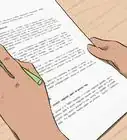This article was co-authored by Lucy Yeh. Lucy Yeh is a Human Resources Director, Recruiter, and Certified Life Coach (CLC) with over 20 years of experience. With a training background with Coaching for Life and Mindfulness-Based Stress Reduction (MBSR) at InsightLA, Lucy has worked with professionals of all levels to improve the quality of their careers, personal/professional relationships, self marketing, and life balance.
There are 13 references cited in this article, which can be found at the bottom of the page.
This article has been viewed 655,273 times.
Sometimes, a company may not have a job listed that you want to apply for. Companies don't always have every job listed, however, which is where a letter of inquiry asking for a job is appropriate! It's a way to introduce yourself to the company and ask about available positions. Always research the company and then treat your email much like a cover letter, presenting your strengths to the company in a concise format.
Steps
Researching the Company
-
1Pick appropriate companies for your skill set. Don't just send out inquiry letters to every company within a 20-minute radius of where you live. Carefully think about the kind of company you'd like to work at and the kind of work you'd like to be doing.[1]
- Research the companies in your area to find out which would be the best fit for you.
-
2Research the company through its website. You can't write a solid inquiry letter without knowing some about the company first. Check out the company's mission statement, "About Us" page, and goals. Dig through the website to get a sense of what drives the company and what it strives to achieve.[2]
- For instance, maybe the company focuses on innovation or maybe they sell themselves as a trusted brand. That's important information for you to gather.
- It's also important to look at the most important employees, such as the CEO or main managers, and learn more about them.[3]
Advertisement -
3Check out how the company presents itself on social media. Review the company's main social media accounts, including recent posts. That will give you an idea of recent news about the company, but it also helps you understand more about the culture and the brand.[4]
- For instance, if the company is very formal in its social media interactions, that tells you it prefers to maintain a professional appearance at all times, and the workplace environment probably reflects that. Alternatively, if it presents itself in a quirky and personable fashion on social media, that could indicate a more relaxed and creative work environment.
-
4Look at press releases and recent news. The company's website should have press releases, and that's a good place to start. It shows you what the company has been proud of recently. However, you should also look for news about the company outside of its main website, as that will give you a more rounded view.[5]
- You may need to read in between the lines. If the company is bringing out a lot of new products, it could be that some of its old product lines are failing or it could be the company is trying to go in a new direction.
-
5Match your skills to what the company needs. Make a list of what you think the company is looking for. Use your research on the company's goals and job postings to get an idea of what they want. Then, match up your skill set with what they need.[6]
- The job postings may have keywords like "team player," "good communicator," "able to think on your feet," and "hard worker," just to name a few.
- It can help to match up specific experiences with each needed skill. For instance, if the company is looking for a team player, talk about how you worked with teams in your last position to complete weekly projects.
-
6Decide who you will write to. Dig through the company's website and find someone it would make sense for you to contact. A hiring manager is good, but the head of the department you'd like to work in is even better. Look for the page with the main employees, and then search for one that works in or heads the department you'd like to work in.[7]
- Find the person's email, too, if possible.
Drafting Your Message
-
1Set the email up like a cover letter. That is, start with your name, address, phone number, and email at the top. Skip a line, then add the date. Skip a line and put the person's name you're contacting, the company, the address, the phone number, and the email.
- Use the person that you found on the company's website.
-
2Address the letter to the person you found. Skip a line between the contact information and your greeting. Begin with "Dear Mr./Mrs./Ms. Roberta Jones:" Follow the greeting with a colon and skip a line underneath it, too.
- If the person has a professional title like "Dr.," use that instead of Mr./Mrs./Ms.
EXPERT TIPLucy Yeh is a Human Resources Director, Recruiter, and Certified Life Coach (CLC) with over 20 years of experience. With a training background with Coaching for Life and Mindfulness-Based Stress Reduction (MBSR) at InsightLA, Lucy has worked with professionals of all levels to improve the quality of their careers, personal/professional relationships, self marketing, and life balance.Career & Life Coach
 Lucy Yeh
Lucy Yeh
Career & Life CoachHow you write depends on your audience. If you're writing to a specific person, try to include some factoid that connects you both. Figure out whether you have the same alma mater, a common colleague, or a common passion and include that information in the email. Make it personalized by commending the person on something you admire in them and always include a gracious 'thank you.'
-
3Use the first paragraph to introduce yourself and your purpose. Say your name and some basic information about yourself, such as your current profession. Then note that you are writing to inquire about jobs at the company.[8]
- For example, you might write, "My name is Jessica Hester, and I am a recent graduate with a degree in graphic design. I am writing today to ask about open positions in your company, particularly ones in the design department."
-
4Establish why you're a good candidate in the middle paragraphs. Connect the dots between your skills and the company's needs. Give short but specific examples of your skills to show how they would benefit the company. That establishes your experience as well.[9]
- If the company seems to look for creative, innovative people, you might write, "After researching your company, I see you place a high value on creativity and innovation. At my last position, I designed and marketed a campaign for one of the company's main brands, and sales went up 10%, partially due to the creativity of the campaign. I am sure I could put that same expertise to work for you at your company."
-
5Reiterate what you can do for the company as you close the letter. In the last paragraph, summarize what you've said and why you're writing. Also, try to leave the reader on a positive note and give them some way to contact you.
- For example, you might write, "Thank you for taking the time to review my inquiry for positions at your company. I hope you can see I am a strong candidate who will work hard for you. If you know of any position I would be a good fit for, please feel free to contact me at jhester@theemailsite.com or (432) 239-1103."
-
6End with a closing and your name. You can use "Sincerely," for a more formal company or "All the Best," for a slightly less formal company. You could also try "Thank you again for your time." Use a comma after the closing and place your name on the next line.[10]
Reviewing the Email and Awaiting Replies
-
1Edit the email so it's short and sweet. You have very little time to impress the person who's reading, particularly if they're reading on a tablet or phone. They will need to scroll to read long messages, and you don't want to lose your audience. Aim for 3 short paragraphs or less.[11]
-
2Read and re-read the email for typos and grammatical mistakes. It's easier to make mistakes in an email format, so copy and paste the text into a word processing document if your email doesn't have spellcheck. Also, read your text aloud so you can hear any awkward sentences and missed words.[12]
- It also helps to have someone read over it if possible.
-
3Create a specific subject line for your email. Keep the subject line under 8 words so that most of it will be rendered in the preview for the email. However, be as specific as possible so the person knows why you're writing.[13]
- For instance, you might say, "Jessica Hester Inquiring about Design Jobs."
-
4Send the email in. Once you're sure the email is as polished as you can make it, send the email to the appropriate address. Make sure to spell the address correctly, as it will fail to send if you don't. Wait 2 weeks to hear back from the company.[14]
-
5Ask the company to retain your information for the future. If the company says that it doesn't currently have openings, request they keep your information. That way, if they have an opening in the future, you will still be in their files.[15]
- You might write, "I appreciate you getting back to me. Would it be possible for you to keep my information on file in case any positions open up in the future?"
-
6Follow up with an email or phone call if you haven't heard back in 2 weeks. Keep a file of the companies you've sent emails to and the date you sent the email. That way, you know who to follow up with. When following up, ask if the company got your initial inquiry and if it has any positions open.[16]
- For instance, you might write, "I contacted you two weeks ago by email about job openings in your company. I wanted to follow up with you to ensure you got my request and to see if you have any information for me."
Community Q&A
-
QuestionHow should I reply to a rejection email?
 Dahlia GillespieCommunity AnswerYou do not need to reply to rejection emails, but if you wish, you can just write something on the lines of: Dear Sir or Madame (or name of the Employer). Thanks for your email. I am sorry that this time I was not eligible to work at (name of the company). Nevertheless I appreciate your time looking into my experience and studies. If any job opportunity opens up in the future I would appreciate you letting me know. Kind regards, (your name).
Dahlia GillespieCommunity AnswerYou do not need to reply to rejection emails, but if you wish, you can just write something on the lines of: Dear Sir or Madame (or name of the Employer). Thanks for your email. I am sorry that this time I was not eligible to work at (name of the company). Nevertheless I appreciate your time looking into my experience and studies. If any job opportunity opens up in the future I would appreciate you letting me know. Kind regards, (your name).
References
- ↑ http://www.thesource.me.uk/assets/Uploads/Jobs-and-careers/Askingcompanies.pdf
- ↑ https://www.ivyexec.com/career-advice/2016/how-to-write-a-cold-email-for-a-job-inquiry-that-no-one-can-turn-down/
- ↑ https://www.glassdoor.com/blog/7-research-job-interview/
- ↑ https://www.forbes.com/sites/dailymuse/2014/05/22/the-ultimate-guide-to-researching-a-company-pre-interview/#7ad4c9955ee6
- ↑ https://www.glassdoor.com/blog/7-research-job-interview/
- ↑ http://www.thesource.me.uk/assets/Uploads/Jobs-and-careers/Askingcompanies.pdf
- ↑ https://www.ivyexec.com/career-advice/2016/how-to-write-a-cold-email-for-a-job-inquiry-that-no-one-can-turn-down/
- ↑ http://www.youthcentral.vic.gov.au/jobs-and-careers/applying-for-a-job/what-is-a-cover-letter/sample-cover-letters/cover-letter-when-no-job-is-advertised
- ↑ https://www.jmu.edu/cap/students/jobintern/correspondence/coverletter.shtml
- ↑ https://fairygodboss.com/articles/how-to-write-a-letter-of-interest-for-an-informational-interview
- ↑ https://www.ivyexec.com/career-advice/2016/how-to-write-a-cold-email-for-a-job-inquiry-that-no-one-can-turn-down/
- ↑ http://www.thesource.me.uk/assets/Uploads/Jobs-and-careers/Askingcompanies.pdf
- ↑ https://www.businessinsider.com/the-perfect-email-subject-line-for-job-hunting-2014-3#keep-it-short-1
- ↑ http://www.thesource.me.uk/assets/Uploads/Jobs-and-careers/Askingcompanies.pdf
- ↑ http://www.thesource.me.uk/assets/Uploads/Jobs-and-careers/Askingcompanies.pdf
- ↑ http://www.thesource.me.uk/assets/Uploads/Jobs-and-careers/Askingcompanies.pdf
About This Article
To write an email asking for a job, address the letter to the hiring manager or head of the HR department, if you can find that information on the company’s website. Indicate your interest in the company and what job you're applying for, then present your work history. Don't forget to highlight your strengths and specialties, then close with something formal like, "Best Regards." Try to keep your email concise and be sure to proofread it carefully before submitting it! For more information on writing techniques and what to include in your email, read on!


















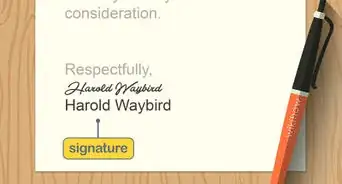
-Step-17-Version-3.webp)



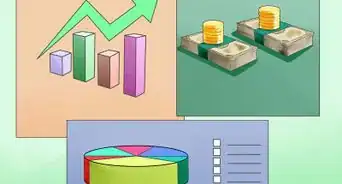
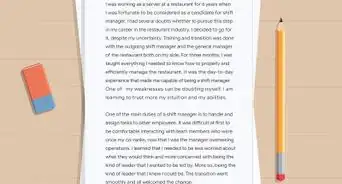
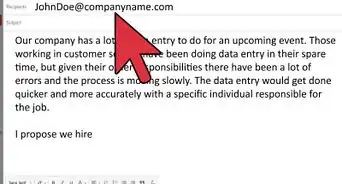

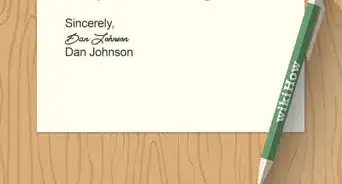


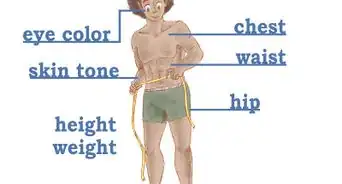
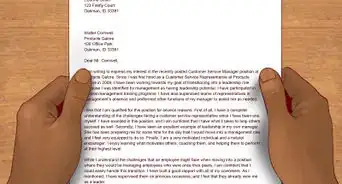








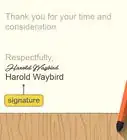
-Step-17-Version-3.webp)

